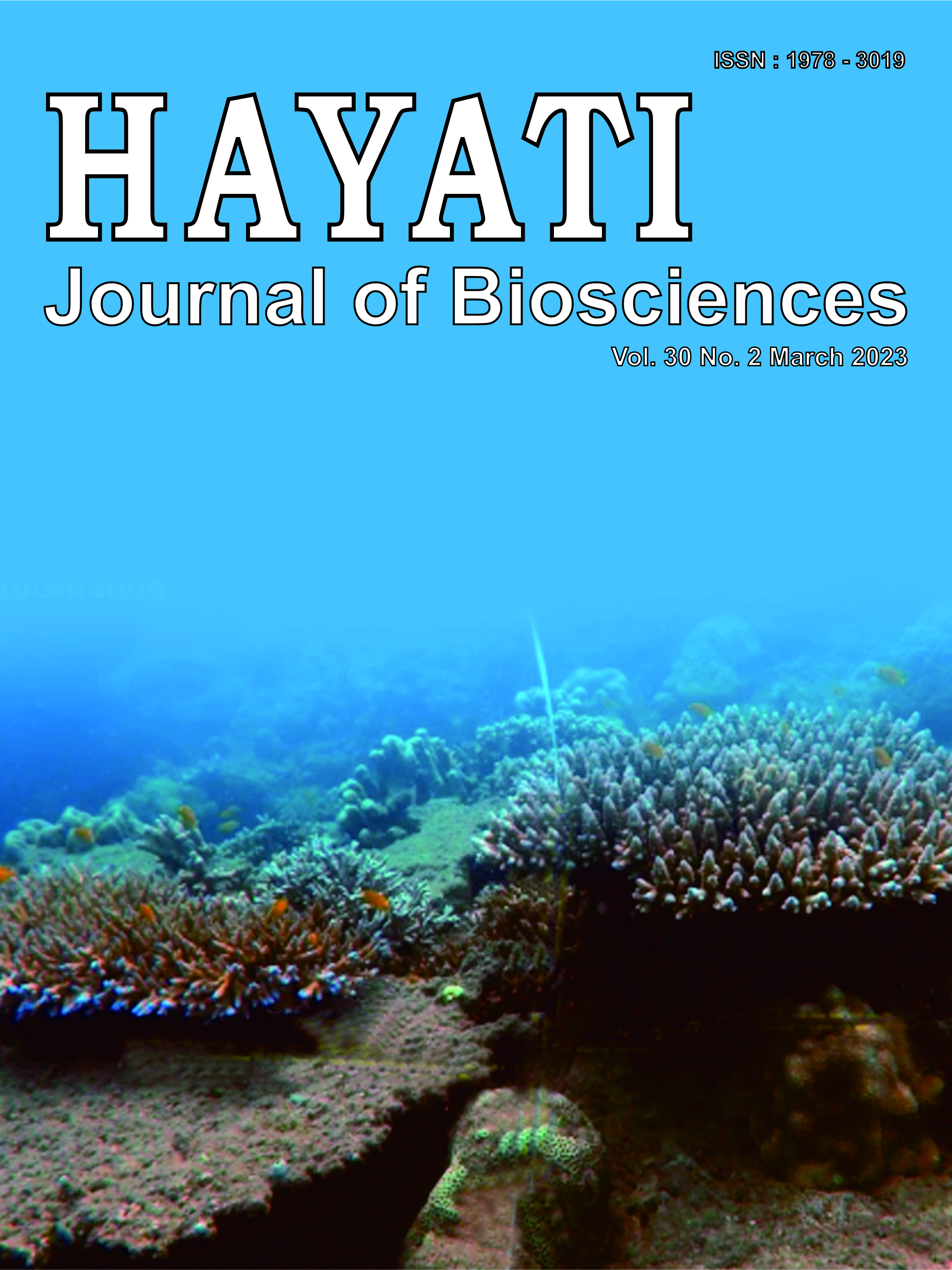Paederia foetida Linn Leaves-Derived Extract Showed Antioxidant and Cytotoxic Properties Against Breast Carcinoma Cell
DOI:
https://doi.org/10.4308/hjb.30.2.271-280Abstract
Paederia foetida Linn. is a rich source of active compounds, yet its antioxidant and cytotoxic properties remain poorly studied. This current research aimed to investigate the chemical profiles of a crude extract derived from P. foetida leaves, its fractionated substances, and their antioxidant and cytotoxic properties on MCF-7 cells, a breast carcinoma cell. Six fractionated substances have been separated in thin layer chromatography (TLC) plate. Five fractions showed antioxidant properties, as indicated by the formation of the yellowish band on the TLC plate after spraying with the DPPH reagent. Furthermore, crude extract of P. foetida leaves and its fractions are also characterized by antioxidant properties against 2, 2'-azino-bis-3-ethylbenzothiazoline-6-sulfonic acid (ABTS) and 2,2-diphenyl-1-picrylhydrazyl (DPPH) free radicals. F1 fraction exhibited the most potent antioxidant activity with IC50 values of 10.94±2.67 and 50.04±0.48 µg/ml, respectively, toward DPPH and ABTS radicals. Crude extract and all six fractions also varied in their cytotoxic properties against MCF-7 cells, with IC50 values ranging from 410.24±0.30 to 831.57±6.91 µg/ml. F3 fractions showed the strongest cytotoxicity (IC50 value: 410.24±0.30 µg/ml). Methanolic extract and active plant leaf fractions contained flavonoid and phenolic compounds, as measured by aluminum chloride and Folin-Ciocalteu reagent, respectively. Liquid chromatography-tandem mass spectrometry (LC-MS/MS) analysis showed that phenol, flavonoid, alkaloid, limonoid, and steroid were the major compound found in the crude extract and fractions. In conclusion, the present study proved that crude extract of P. foetida leaves and its fractionated substances were potential as antioxidant and cytotoxic agents.
Downloads
Downloads
Published
Issue
Section
License
HAYATI J Biosci is an open access journal and the article's license is CC-BY-NC. This license lets others distribute, remix, tweak, and build upon author's work, as long as they credit the original creation. Authors retain copyright and grant the journal/publisher non exclusive publishing rights with the work simultaneously licensed under a https://creativecommons.org/






















.png) Bogor Agricultural University
Bogor Agricultural University Department of Biology
Department of Biology The Indonesian Biological Society
The Indonesian Biological Society 

